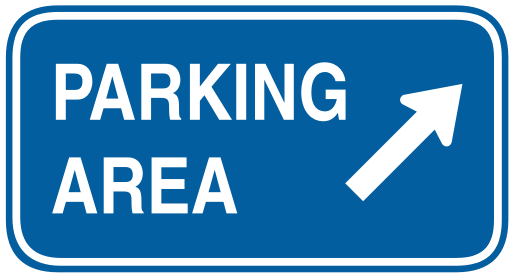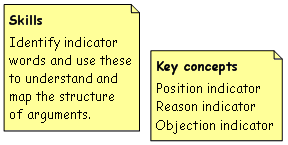The Science Of Scientific Writing Set 2 Set 2 - Indicator words : 3 types of Indicators : Example : Exercise 1 : Exercise 2 : Exercise 3 : Exercise 4 : Exercise 5 : Exercise 6-Quiz : Exercise 7 : Final page Set 2.
OVERVIEW: The way to well-written science
PART I: Paragraphs and Sentences
SET A: Paragraphs: The Maps Behind Them
SET B: Paragraphs: Using Maps to Meet Readers' Expectations
SET C: Paragraphs with Something Extra: Points and Tails
SET D: The Generic Section: Expectations and Maps as Blueprints
SET E: Scientific Sections: The Methods and Results
SET F: Scientific Sections: The Discussion
SET G : Scientific Sections: The Introduction
SET H : Sentences
SET I : The Paper as a Whole
PART II: The Paper and its Sections
SET 1: Argument Parts
SET 2: Indicator Words
SET 4: Locating Arguments in Prose
SET 5: Rationale's Essay Planner
SET 6: Evidence in Arguments: Basis Boxes
Synthesis 1: Position-Early Paragraphs
Synthesis 2: Position-Final Paragraphs
Synthesis 3: Writing a Discussion I
Synthesis 4: Writing a Discussion II
Set 2- Indicator words
Suppose you're
driving your car in an unfamiliar city. Isn't it helpful when there are
large, clear signs to help you find your way about? Even if you've never been
in that city before, those signs let you know where you are,  and
what lane you need to be in to get where you're going.Well expressed arguments
have helpful 'signposts' too. These are a special kind of words called
'indicators'. Indicator words are clues that help us to identify the various
parts of arguments: the position, reasons, and objections.
and
what lane you need to be in to get where you're going.Well expressed arguments
have helpful 'signposts' too. These are a special kind of words called
'indicators'. Indicator words are clues that help us to identify the various
parts of arguments: the position, reasons, and objections.
They fit within a larger category of "navigational" words and text used in all types of writing, called metadiscourse, that is writing that discusses itself. Simple words and phrases like first, next, in regard to, and in conclusion are all non-argumentative metadiscourse. But in long, complicated texts, metadiscourse may involve entire sentences, paragraphs or even a whole chapter! For example, consider a review article that begins like this:
"This review will cover three broad areas of current research. First, we will focus on....
There is no content in this text that relates to the topic under review, whatever it is. The writer is kindly providing a map of what is to follow, so the reader does not get lost. Good writers are always conscious of the navigational difficulties a reader might face and they will often go to great lengths to reduce them.
Simple linear text is actually inherently difficult to navigate, and various other ways of overcoming its limitations have also evolved, such as the use of diagrams and hyperlinking in HTML documents.
Set 2 will show you how to identify the indicator words used in a written argument, and how to use these 'signposts' when you convert the text to an argument map. For the reverse process, converting a map to text, Set 2 will demonstrate how important it is to add in indicator words if we want our text to be as easily grasped as a map.

Content of this page drawn in whole or part from the Austhink Rationale Exercises with permission from Austhink .